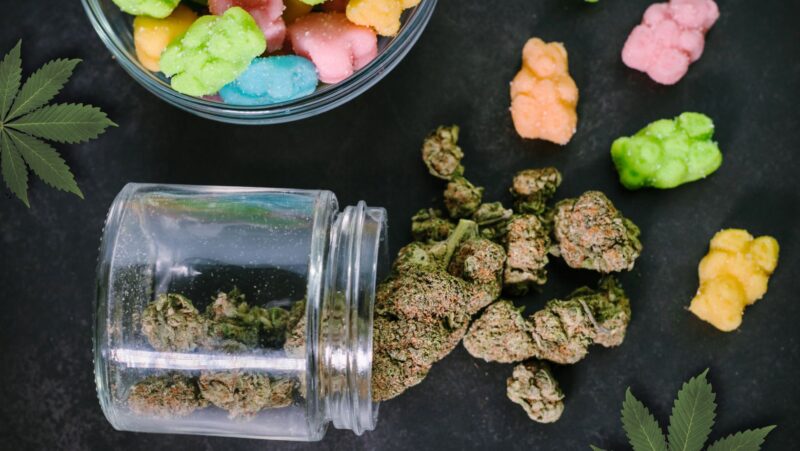Many people are curious about why Advil tastes sweet even though it contains no sugar. Advil, also known generically as ibuprofen and by its prescription name Motrin, belongs to a class of drugs called non-steroidal anti-inflammatory drugs (NSAIDs). Although Advil is not sweet to the taste, it does have a pleasant aftertaste. This article will explore the science behind why Advil has this effect and how it relates to pain relief.
Why does advil taste sweet
Advil works by inhibiting an enzyme called cyclooxygenase (COX). This enzyme is involved in the production of molecules called prostaglandins, which cause inflammation and pain when released into your system in response to injury or infection. By blocking COX, ibuprofen prevents prostaglandins from being released into your body and therefore alleviates pain. But how does this relate to why Advil has a sweet taste?
In addition to reducing inflammation and combating pain sensations, COX is also responsible for releasing molecules that produce flavour sensation in the mouth; specifically sweet taste molecules known as glycerols. In the absence of neurotransmitters in the brain that interpret these molecules as pleasant or unpleasant sensations—one study found that when ibuprofen was administered directly into brain tissue it resulted in decreased responses related to signals commonly associated with sweetness—the mouth will detect them but interpret them only as “pleasant.” Therefore, when ibuprofen blocks COX activity resulting in decreased amounts of glycerol entering your saliva membrane beyond what it would normally detect on its own, your brain interprets this mild increase in concentration as something pleasant: sweetness without sugar!
Chemical Makeup of Advil
Advil is a popular over-the-counter pain reliever that is often taken for headache and body pain relief. But why does it taste sweet? The answer lies in the chemical makeup of Advil. Advil contains Ibuprofen and other compounds that give it that sweet flavour.
In this article, we’ll explore the science behind why Advil tastes sweet.
Active ingredient: ibuprofen
Ibuprofen is the active ingredient in Advil, belonging to a class of drugs known as Non-Steroidal Anti-Inflammatory Drugs (NSAIDs). Ibuprofen is a white, crystalline powder and has a bitter taste; however, Advil tablets are coated with a sweet-tasting coating so that they are easier to swallow.
In addition to ibuprofen, Advil also contains other inactive ingredients such as:
- Glycerin lauryl sulphate (which helps dissolve the tablet quickly)
- Magnesium stearate (a lubricant that prevents ingredients from sticking together)
- Polyethylene glycol (which helps stabilise the tablet’s pore structure)
- Starch and sugar
These inactive ingredients act as filler agents for the drug. Their purpose is purely functional, helping maintain uniformity within each individual pill or capsule.
Inactive ingredients
Advil is a popular global brand of ibuprofen, a nonsteroidal anti-inflammatory drug (NSAID) used to relieve pain, reduce inflammation and treat fever. Advil comes in several formulations to meet different needs and conditions, including tablets, capsules and gels. All of Advil’s inactive ingredients are listed on the packaging so you know what is in it as well as why it may taste sweet.
The inactive ingredients include:
- Magnesium stearate and microcrystalline cellulose, which are particularly important for binding the active ingredient together while making the tablet easy to break apart when swallowed.
- Polyethylene glycol 400 and polysorbate 80, which act as emulsifiers or dispersing agents that help the various ingredients mix together better when suspended in water after ingestion.
- Sodium starch glycolate helps powder medications flow more freely when powdered pills are involved.
- Hypromellose 2910 is an inert substance used to thicken up consistency which keeps it from becoming too runny or sticky too quickly during processing.
- Titanium dioxide provides a whiter coloration for certain prescription tablets.
- Fructose adds sweetness; providing patients with a more palatable taste that helps make taking meds more agreeable for some people who may be more sensitive about their medications’ flavours than others might be.
Sweeteners Used in Advil
Advil is known for its pain relieving properties and its sweet flavour. While Advil may taste sweet, there is actually no sugar in the medication. The sweet flavour is created by adding sweeteners to the formulation. So why does Advil taste sweet and what types of sweeteners make it that way?
In this article, we will explore the science behind why Advil tastes sweet and what type of sweeteners are used to achieve this flavour.
Aspartame
Aspartame is an artificial sweetener that is commonly used in Advil products. It has approximately 200 times the intensity of sugar and yet no calories. Aspartame is composed of two amino acids- aspartic acid and phenylalanine – which combine to form its distinctive sweetness. It has been approved by the US Food and Drug Administration (FDA) for use in a variety of foodstuffs since 1981, when it was approved as a tabletop sweetener.
Aspartame has also been used to sweeten chewable tablets, both over-the-counter cold relief medications like Advil and prescription medications such as anticonvulsants and antibiotics. The sweetness provided by aspartame masks the bitter taste of active ingredients, so that these medications can be taken more easily by adults and children alike. Additionally, some people who must watch their sugar intake can opt to take Advil in its tablets containing aspartame instead of its capsules containing sucrose or glucose.
Sucralose
Sucralose, also known as Splenda, is a common sweetener used in Advil. It is produced by replacing part of the hydroxyl group on the sugar molecule with chlorine atoms. This makes it possible to enjoy a sweetness similar to that of sugar, but with fewer calories and carbohydrates. Additionally, its taste is stable even when exposed to high temperatures or acidic media. Because its sweetness intensity remains constant over time, it does not have any aftertaste or unpleasant lingering qualities often found in other sweeteners.
All these properties make sucralose a great addition to many food and beverage products – including Advil!
Acesulfame Potassium
Acesulfame Potassium (Ace-K) is a popular artificial sweetener used in the formulation of Advil. It was discovered in 1967 and approved by the US Food and Drug Administration (FDA) in 1988. Ace-K is a calorie-free sweetener that is 200 times sweeter than sugar. It has an intense sweetness but also has a bitter aftertaste, so it is often combined with other sweeteners to mask this taste.
Ace-K is very stable when heated, making it well suited to food products like drinks and candy. It does not break down during the digestive process, which means that it does not provide any calories or energy for the body to use. It cannot damage teeth either, as it does not cause tooth decay like other sugars do.
Advil contains Ace-K as part of its formulation to improve its taste without adding calories or causing dental damage. Although the tiny amount of Ace-K per serving makes up only 0.5 percent of Advil’s content, it’s enough to make a noticeable difference by significantly enhancing the sweetness of the pain reliever.
Why Sweeteners are Added to Advil
Many people wonder why Advil has a sweet taste. The answer to this is actually quite simple: sweeteners are typically added to Advil in order to improve the taste. Sweeteners are added to many types of OTC medications, including Advil, because they can help mask the bitter taste of the active ingredients. In this article, we’ll explore the science behind why Advil tastes sweet and the different types of sweeteners that are used.
To mask the bitter taste of ibuprofen
Ibuprofen, the active ingredient in Advil, has a slightly bitter taste. To counteract this bitterness and make it more palatable for consumers, manufacturers add sweeteners to the medicine. Aspartame and mannitol are two of the commonly used sweeteners.
Aspartame is a non-nutritive sweetener that contains four calories per gram. It is used in place of more calorie-dense sugars like glucose and fructose because it doesn’t contribute to weight gain or dental caries. Aspartame has a particularly strong sweetness profile compared to other sweeteners, so less is required to sweeten ibuprofen than if other ingredients are used.
Mannitol is also a non-nutritive carbohydrate that adds sweetness without contributing additional calories or increasing risk for dental caries when compared to sugar replacements like high fructose corn syrup. It is an attractive choice because of its low cost and stability in high temperatures; this quality eliminates the need for refrigeration and makes mannitol perfectly suitable for manufacturing ibuprofen medicines without degradation of efficacy or taste. Mannitol also has excellent solubility features that allow it to dissolve quickly in liquids while forming a relatively stable suspension with Ibuprofen’s bitter taste compounds.
The balance between the bitter compounds of ibuprofen and these two common sweeteners will determine whether Advil tastes good enough for consumption and how much sugar must be added to make sure that people take their medicine properly while still enjoying its flavour. Additionally, these sweeteners help mask any unpleasant odours from caplets or liquid medications, making them easier to swallow as well as more appealing in taste!
To make the product more palatable
One of the primary reasons why sweeteners are added to Advil is to make the product more palatable for consumers. Although some may argue that taste can be a personal preference, there is a scientific reason why sweeteners help improve the taste of Advil.
When you consume Advil, it is broken down into its component molecules, which then interact with your taste and smell receptors located in your mouth, throat and stomach lining. When this happens, you will experience what scientists refer to as “bitterness” or “sourness” depending on how much of the component molecules are present in the product. Unfortunately, these bitter tastes can cause people to turn away from using the pain reliever even though it may be perfectly effective at reducing one’s pain levels.
By adding sweeteners such as sugar or artificial sweeteners like sucralose, this bitter taste can be reduced or eliminated entirely. This makes Advil easier to consume and thereby increasing its usage rates among consumers who would otherwise forsake using this form of pain relief due to its unpleasant taste. In addition, adding sweetener to Advil helps create an improved texture and helps mask any gritty residue that may form during manufacturing processes.
Conclusion
After analysing the science behind why Advil tastes sweet, it is evident that the main factors at play are the presence of two artificial sweeteners in each pill: mannitol and saccharin. Both sweeteners serve to mask the bitter flavour of ibuprofen, allowing it to be more palatable. The bitter taste of ibuprofen can also be further minimised through coating Advil with a layer of polyvinylpyrrolidone and its derivatives.
Furthermore, Advil utilises several distinct flavours such as raspberry, lemon, and bubblegum alongside odours like lavender for added pleasure.
In conclusion, it is clear that although Advil does not contain any ‘true’ sugar content, its presence of mannitol and saccharin found in each pill as well as other flavourings create what many perceive to be a sweet taste sensation. As ibuprofen continues to become increasingly popular due to its analgesic effects, being able to reduce its bitter taste through implementing more advanced forms of masking technology will certainly make it a popular choice among individuals needing pain relief without having to compromise on pleasantness.











